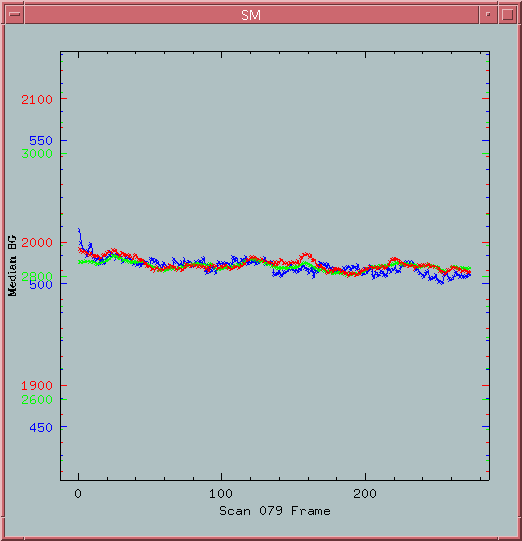
The background median plots provide a useful, if qualitative, measure of the sky conditions in each scan, often allowing one to catch problems not visible even in jump counters. Here I have collected a number of illustrative images to show the kinds of things I look for.
/home/hurt/bin/bkg NNNwhere NNN is the scan number, or you can see all scan backgrounds sequentially using:
/home/hurt/bin/bkgflashNote that each plot shown below uses the same relative absolute ranges at J, H, & Ks (150, 700, 300 DN respectively) so the ranges (but not the absolute y values) are directly comparable to one another.

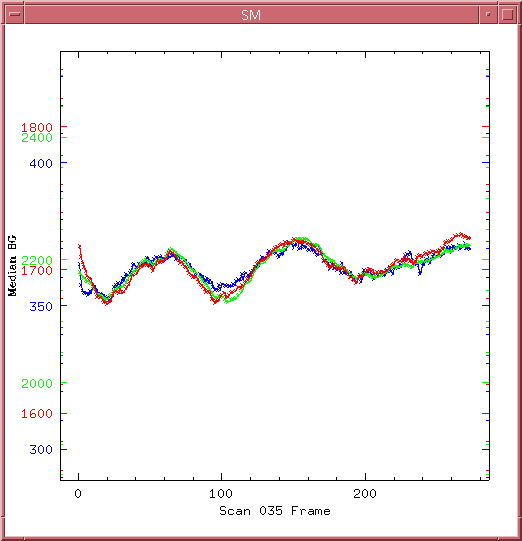
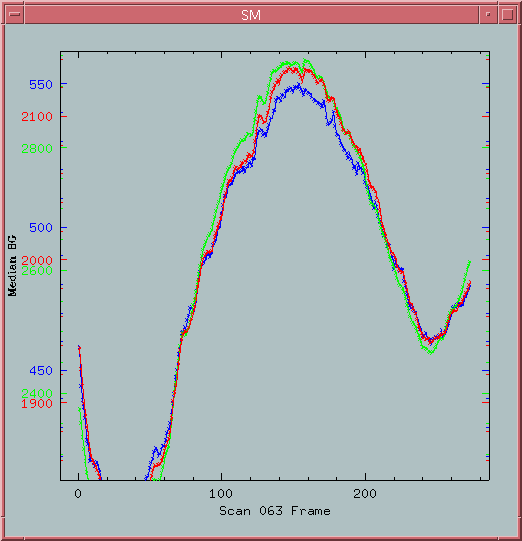
This next one shows very small amplitude variations but at a very high frequency. This is enough to trigger the jump counters in this scan and to create some stair-stepping artifacts in the background. Generally, the more rapid the change, the smaller the amplitude needs to be to cause problems
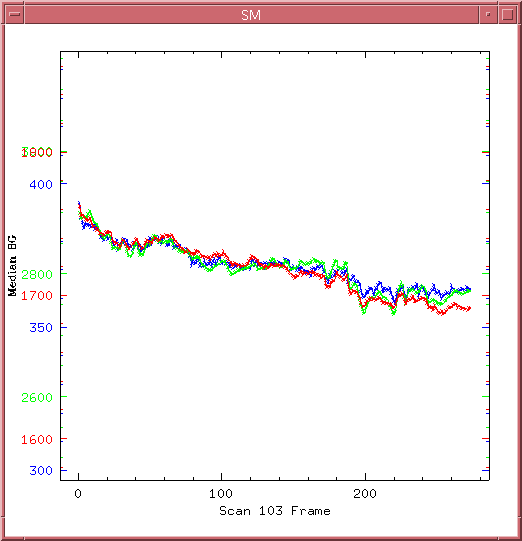
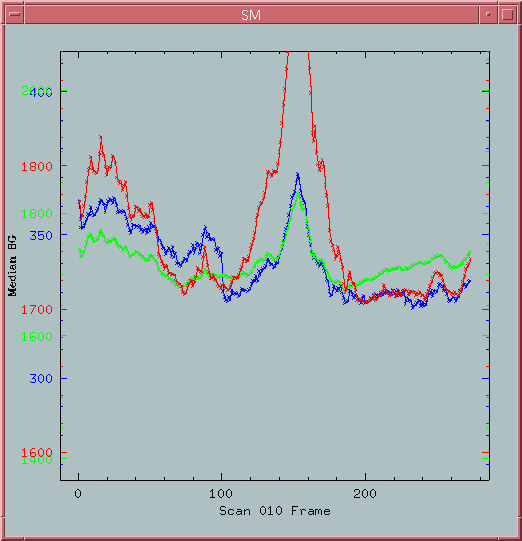
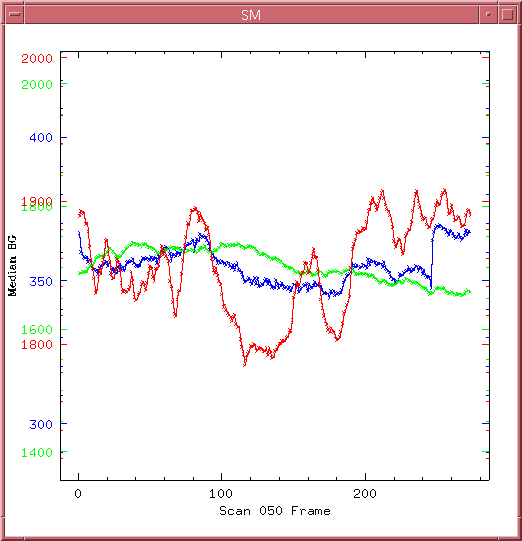
In the following plot, the signs of clouds are quite weak, but the characteristic K spiking is seen and can often cause background problems.
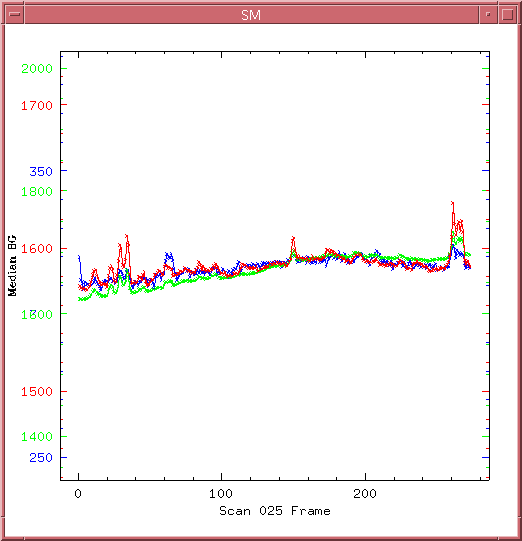
The next one is interesting because of an H band drop as Ks jumps.
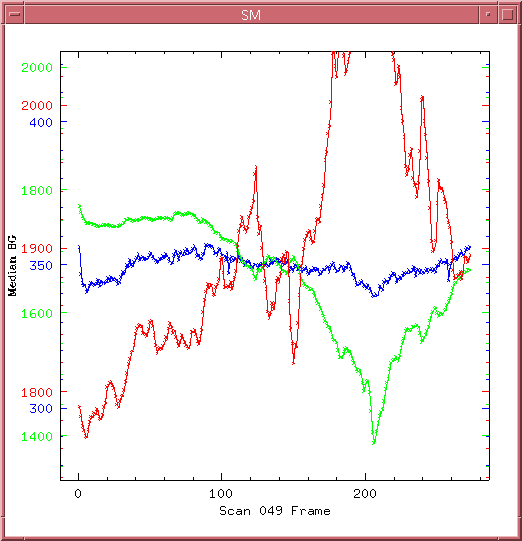
In the next two plots, cloud signatures are also seen, but in this case they appear to be cirrus on a winter night with a full moon, so the J band effects are most prominant.
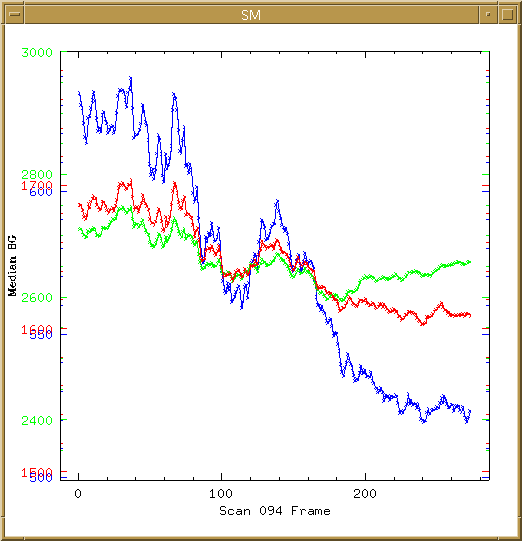
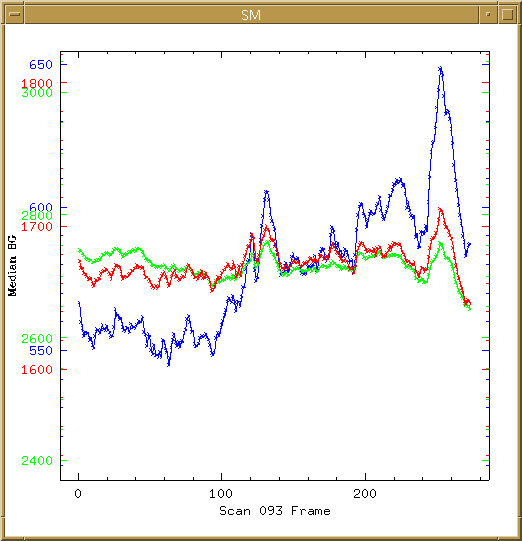
The next plot shows a different kind of background animal, thus far noted on nights with a nearly-full moon. It leaves no significant artifacts in the backgrounds of the coadds and thus far we have treated it like airglow (even though the association with the moon might suggest a more cloudlike nature).
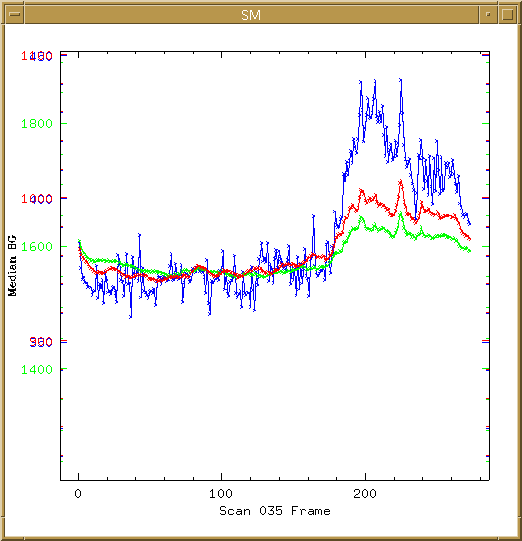
Robert Hurt
Last updated: 11/6/98